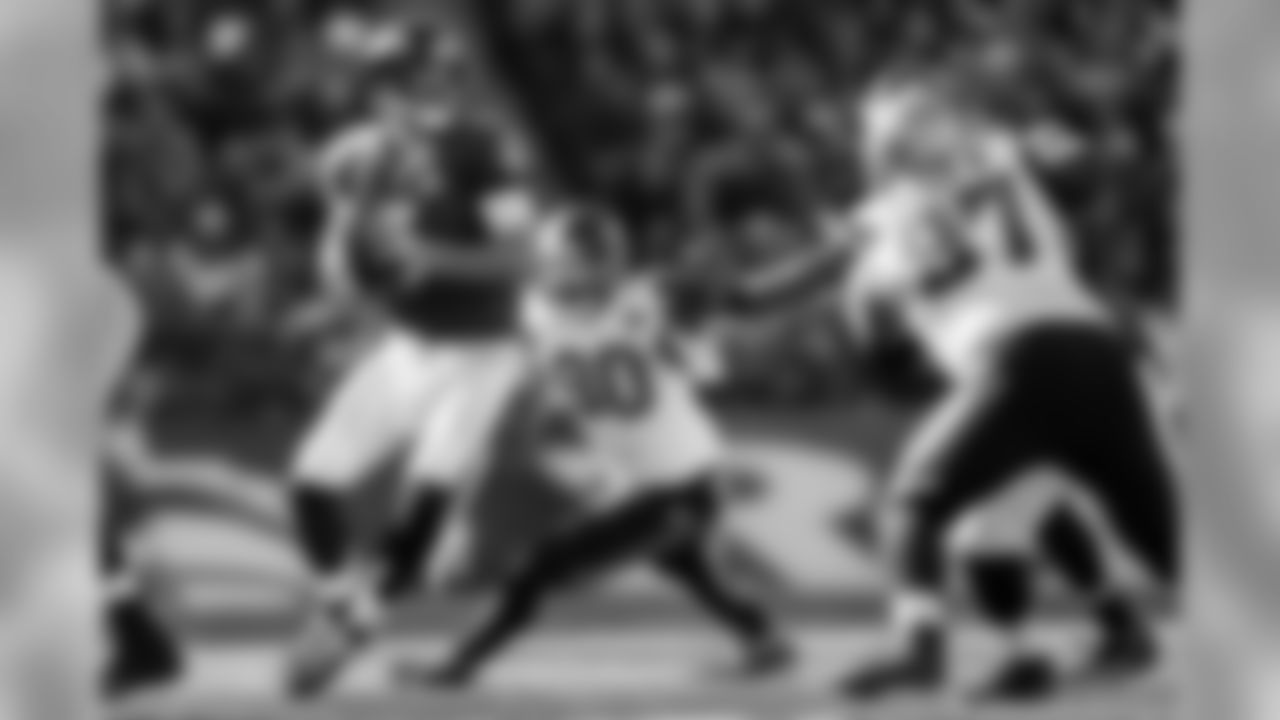What happened to the Ravens' rushing attack?
In 2013, it finished last in the NFL in average yards per carry. Last year, it skyrocketed to among the league's best last year. Now it has fallen back to 18th in average yards per carry (4.0) and 23rd in average yards per game (98.1).
After entering the year as the offense's perceived bread and butter, it hasn't worked out that way.
"I think the run game is something to talk about," Head Coach John Harbaugh said Monday. "We're looking at it hard this morning, this afternoon, with the coaches."
Harbaugh outlined two issues: they aren't running the ball effectively and they aren't running it enough.
The Ravens rank 24th in the league in rushing attempts this season with 220. Carolina leads the NFL with 303 and Detroit has the fewest attempts at 176.
On the surface, the Ravens' offensive philosophy is grounded in a physical rushing game. That's in their DNA. Thus, it's obvious that they haven't stayed on course in that regard.
However, while the topic of frequency is one that's easier to quantify, it doesn't necessarily equate to a solution. Running the ball more would likely result in more yards per game, but it may not be the best course of action if throwing the ball is having more success.
Still, the run game has to have a chance to get off the ground if it's every going to succeed. In the first half, the Ravens ran 33 offensive plays. Flacco dropped back to pass on 29 of them. That means just four runs in the first half.
Harbaugh said Flacco wasn't checking out of run calls into passing plays. Offensive Coordinator Marc Trestman was just dialing up a heavy passing attack.
"There might have been a time or two were we went to a pass, but it wasn't predominant that way," Harbaugh said. "It was just the way it was called."
Perhaps Baltimore took to the air so often because the Jaguars entered the game with the league's seventh-best rush defense, allowing just 94.3 yards per game. They were more susceptible in their secondary.
The Jaguars were also committing extra players to stop the run. Jacksonville sometimes had 10 players near the line of scrimmage with just a single high safety playing the deep middle of the field. That's a very difficult formation to run against.
Teams can afford to do that if they're confident the Ravens can't beat them in the passing game, particularly deep. That's where the loss of Steve Smith Sr. hurts the Ravens not only through the air, but also in running the ball.
"We'd like to run the ball more; there's no question, on the one hand," Harbaugh said. "On the other hand, if you look at the defenses they were playing, there were eight guys within 4 or 5 yards of the line of scrimmage at all times, pretty much."
Even with the stacked box, Harbaugh said the Ravens were close to popping some good runs. They used many different schemes and formations to try to crack the code, and sealed off the edges well, but Jacksonville got too much push up the middle.
"Early in the game, we're a block here and a block there away from popping runs, but a block here and a block there doesn't get it done," Harbaugh said.
Trestman would also call more rushing plays if they worked out better. The Ravens would be in more manageable down and distances where they can easily pass or throw and keep a defense off balance.
It's tougher to put a finger on exactly why the Ravens' runs, even when they've done it, haven't worked out – when the box is stacked and when it isn't.
The Ravens returned all five of their starting offensive lineman from last year. The only player from that group that has missed extended time is left tackle Eugene Monroe. The Ravens lost backup running back Lorenzo Taliaferro and Forsett was banged up by an ankle injury but didn't miss any time.
Plus, Baltimore knew it was going to see more defenders this year, particularly after Smith's injury.
"It's hard to say why," Forsett said. "We just need more reps. At the beginning, it was going back and forth, we just have to stick with it and we have to execute when the runs are called."
One way the Ravens are hoping to battle stacked boxes in the second half of the season is to get the tight ends more involved, something the team already wanted to do given the injuries at wide receiver and their talented young group of Crockett Gillmore, Maxx Williams and Nick Boyle.
With more tight ends who can be used as blockers or receiving threats, opponents can't predict what Baltimore will do and the Ravens can audible into more favorable plays based on what the defense is showing.
"That allows you to get maybe one, two or three more good blockers on the field, close to the action, that can cut people off and reach people and do those kinds of things," Harbaugh said. "And then the good thing about our guys is that they can hurt you in the passing game. So, we can run play action passes or spread them out or whatever we want to do with those guys on the field, which is a good thing."
Check out the best photos from M&T Bank Stadium as the Ravens battle the Jaguars!
































































